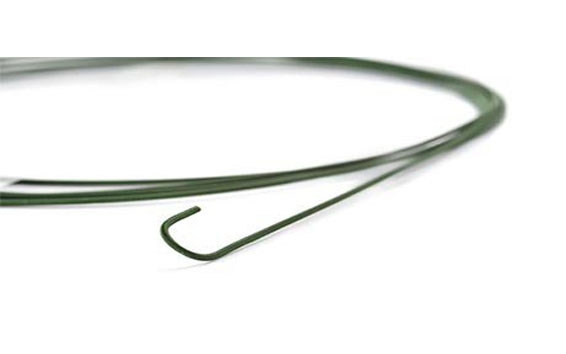Medical navigation tools are vital for the precise execution of diagnostic and interventional procedures. Among these tools, the PTFE Guidewire is distinguished by its PTFE coating, flexible core wire, and radiopaque markers, which enable smooth navigation through intricate anatomical pathways. This enhances procedural outcomes significantly. Precision and maneuverability are critical in medical procedures, directly influencing patient safety and treatment effectiveness. The PTFE Guidewire meets rigorous standards of quality and reliability, making it indispensable for healthcare professionals across various specialties to ensure optimal patient care and procedural success.

Understanding PTFE-Coated Guidewires
Definition and Composition of PTFE (Polytetrafluoroethylene)
PTFE, or Polytetrafluoroethylene, is a synthetic fluoropolymer renowned for its exceptional properties, including low friction, high chemical resistance, and excellent thermal stability. In the medical field, PTFE’s biocompatibility and durability make it an ideal choice for coating medical devices that require smooth interaction with bodily tissues and fluids.
Explanation of PTFE Coating on Medical Guidewires
PTFE-coated guidewires are specialized medical instruments designed for precise navigation through complex anatomical structures. The PTFE coating serves several critical functions: it reduces surface friction, enabling the guidewire to navigate blood vessels and other pathways smoothly. This coating also acts as a protective barrier, enhancing the guidewire’s resilience against wear during procedures. Combined with a flexible core wire, the PTFE coating ensures optimal maneuverability, facilitating healthcare professionals’ ability to access targeted areas within the body with accuracy and ease.
Benefits of PTFE Coating in Medical Applications
The application of PTFE coating on medical guidewires offers significant advantages. By minimizing friction, the coating enhances the guidewire’s maneuverability through narrow or tortuous anatomical passages, thereby reducing the potential for trauma to vessel walls and surrounding tissues. This improvement in handling contributes to enhanced patient safety and comfort during procedures. Furthermore, PTFE-coated guidewires are compatible with various medical imaging techniques, such as MRI and CT scans. Radiopaque markers integrated into these guidewires enhance visibility under imaging, ensuring precise navigation and positioning during interventions.
Applications in Medical Navigation
Peripheral Vascular Interventions
PTFE-coated guidewires play a crucial role in peripheral vascular interventions by facilitating access and navigation for procedures such as angiography, angioplasty, and stenting. Their flexibility and smooth surface enable efficient movement through the vascular system, reducing procedural complications and improving overall outcomes for patients.
Neurointerventional Procedures
In neurointerventional procedures, PTFE-coated guidewires enable safe access to the intricate cerebral vasculature. These guidewires are essential for procedures like embolization, thrombectomy, and aneurysm coiling, where precision and maneuverability are critical to successful outcomes while minimizing risks to delicate brain structures.
Urological Procedures
For urological interventions, PTFE-coated guidewires facilitate smooth navigation through the urinary tract. They are instrumental in procedures such as ureteral stent placement and stone retrieval, where their reduced friction and enhanced flexibility contribute to effective stent deployment and stone extraction, thereby improving patient recovery and comfort.
Gastrointestinal Procedures
In gastrointestinal procedures, PTFE-coated guidewires assist in navigating catheters and devices through the digestive tract. This capability is vital for procedures like endoscopic retrograde cholangiopancreatography (ERCP) and endoscopic ultrasound (EUS), where precise navigation ensures accurate diagnosis and treatment of gastrointestinal conditions, enhancing procedural success rates and patient outcomes.

Demax’s PTFE-Coated Guidewire Advantages Over Traditional Guidewires
Comparative Analysis with Non-Coated Guidewires
| Feature | PTFE-Coated Guidewire | Non-Coated Guidewire |
| Lubricity | Excellent, reduces friction | Moderate, higher friction |
| Vessel Trauma Risk | Lower due to smooth advancement | Higher due to increased friction |
| Flexibility | High, with flexible core wire | Variable, often lower flexibility |
- PTFE Coating: The PTFE coating on Demax’s guidewire provides excellent lubricity, facilitating smooth advancement through the vasculature and reducing the risk of vessel trauma. This results in a safer and more efficient procedure compared to non-coated guidewires.
- Flexible Core Wire: The flexible core wire offers exceptional flexibility and support, allowing for precise navigation through anatomical structures. This enhances the ease of maneuvering the guidewire, making it more effective in complex procedures.
- Radiopaque Markers: Radiopaque markers on the guidewire enhance visibility under fluoroscopy, aiding in the accurate placement of catheters and other medical devices. This feature is crucial for ensuring the correct positioning and reducing the risk of procedural errors.
- Variety of Lengths and Diameters: Demax’s guidewire is available in various lengths and diameters to accommodate different procedural requirements and patient anatomies. This versatility allows for tailored solutions that can improve procedural outcomes.
Clinical Outcomes and Patient Benefits
| Outcome | PTFE-Coated Guidewire | Non-Coated Guidewire |
| Procedure Success Rate | Higher | Lower |
| Patient Comfort | Improved due to reduced trauma | Variable |
| Recovery Time | Shorter due to less invasive procedures | Longer |
- Clinical Outcomes: Demax’s PTFE-coated guidewires are associated with higher success rates in medical procedures. The smooth surface reduces complications, leading to better clinical outcomes and fewer repeat procedures.
- Patient Benefits: Patients benefit from the reduced risk of vessel trauma and smoother procedures. This translates into less pain and discomfort during and after the procedure, enhancing overall patient satisfaction.
- Recovery Time: The reduced trauma and complications associated with PTFE-coated guidewires lead to shorter recovery times. Patients can return to their normal activities more quickly, improving their quality of life.
Cost-Effectiveness and Procedural Efficiency
| Metric | PTFE-Coated Guidewire | Non-Coated Guidewire |
| Procedure Time | Shorter | Longer |
| Hospital Stay | Shorter | Longer |
| Overall Cost | Lower due to efficiency | Higher |
- Cost-Effectiveness: While PTFE-coated guidewires may have a higher initial cost, their efficiency in procedures can lead to overall cost savings. Reduced procedure times and shorter hospital stays contribute to these savings.
- Procedural Efficiency: The superior lubricity and flexibility of PTFE-coated guidewires make procedures quicker and smoother. This efficiency not only benefits the healthcare providers by reducing operation time but also enhances the patient’s experience.
Challenges and Considerations
Limitations of PTFE-Coated Guidewires
Despite their advantages, PTFE-coated guidewires may have limitations, such as potential for coating degradation over time and sensitivity to certain cleaning processes. Understanding these limitations is crucial for optimizing their use.
Safety Concerns and Regulatory Compliance
Ensuring safety and regulatory compliance is paramount. PTFE-coated guidewires must meet stringent standards to ensure they are safe for use in medical procedures. Continuous monitoring and adherence to regulatory guidelines are essential.
Future Developments in Coating Technologies
The field of coating technologies is continually evolving. Future developments may lead to even more advanced coatings that offer enhanced performance, durability, and biocompatibility, further improving the efficacy and safety of medical guidewires.
Final Words
Medical navigation tools are crucial for precise diagnostic and interventional procedures. The PTFE Guidewire, with its PTFE coating, flexible core wire, and radiopaque markers, enables smooth navigation through intricate anatomical pathways, significantly enhancing procedural outcomes. Precision and maneuverability are critical in medical procedures, directly influencing patient safety and treatment effectiveness. The PTFE Guidewire meets rigorous standards of quality and reliability, making it indispensable for healthcare professionals across various specialties to ensure optimal patient care and procedural success. Understanding PTFE-coated guidewires, their composition, benefits, and applications, highlights their superiority over traditional guidewires, underscoring their importance in modern medicine.